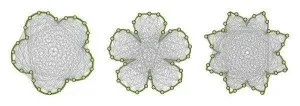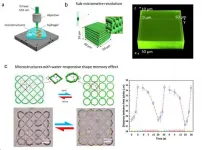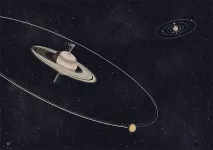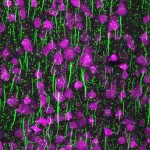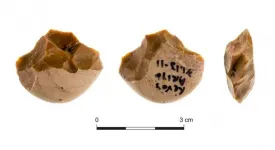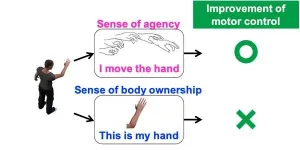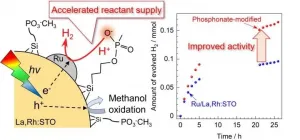Climate-related species extinction possibly mitigated by newly discovered effect
According to a new study, future climate-related species extinction could be less severe than predictions based only on the current trend of global warming.
2021-01-21
(Press-News.org) Changes in climate that occur over short periods of time influence biodiversity. For a realistic assessment of these effects, it is necessary to also consider previous temperature trends going far back into Earth's history. Researchers from the University of Bayreuth and the University of Erlangen-Nuremberg show this in a paper for Nature Ecology and Evolution. According to the paper, future climate-related species extinction could be less severe than predictions based only on the current trend of global warming. However, the researchers do not give the all-clear. At present, the effects of climate change are being exacerbated by human intervention.
The research team led by Bayreuth ecologist Prof. Dr. Manuel Steinbauer used palaeobiological and climate science models to investigate how a temperature trend over a long period of time and a subsequent short-term temperature change together affect species extinction. For this purpose, research data on eight different groups of marine and terrestrial animals were combined and analysed. In total, these groups include around 3,200 genera and more than 46,000 species. One of the key findings of the study was that the extent to which short-term temperature changes affect species diversity depends largely on the context of geographic and climatic history. If a long-lasting cooling is intensified by a subsequent short-term cooling, the climate-related extinction risk of the studied genera increases by up to 40 percent. However, this risk decreases if a long-term cooling of the Earth, such as occurred 40 million years ago up to the industrial age, is followed by a short-term warming.
The researchers explain the effect they discovered by the fact that every species develops adaptations to certain climatic conditions in the course of its evolution. They retain these adaptations over a period of hundreds of thousands or millions of years. A long-term cooling therefore moves the species further and further away from the living conditions that are favourable for them and increases the risk of extinction. If a brief warming now follows, the habitat of the species will again approach the preferred climate. "Further studies are still needed to apply the results of our now published work to climate change as we are currently experiencing it. However, it seems very possible that human-induced global warming that began with the industrial age does not threaten global biodiversity as much as some predictions assume," explains Gregor Mathes M.Sc., first author of the study, who is currently writing a doctoral thesis in palaeobiology at the Universities of Bayreuth and Erlangen-Nuremberg.
"In the next two years, we wish to investigate even more closely the extent to which current forecasts of climate-induced species loss should be adjusted given that they ignore the context of geographic and climatic history. In the current biodiversity crisis, climate change is only one of many causes of species extinction. We humans are intervening in nature so extensively that a large number of species are endangered or have already disappeared from our planet forever as a result," Prof. Dr. Manuel Steinbauer from the Bayreuth Centre for Ecology and Environmental Research (BayCEER) adds.
INFORMATION:
The research team from Bayreuth and Erlangen is part of the research group TERSANE („Temperature-Related Stresses as a Unifying Principle in Ancient Extinctions"), in which scientists from all over Germany use fossil evidence to research climate-related extinctions.
Research Funding: The research that led to the study now published was funded by the German Research Foundation as part of the TERSANE research group from its "PastKey" project, and by the European Research Council (ERC) from the "Humans on Planet Earth (HOPE)" project.
[Attachments] See images for this press release:
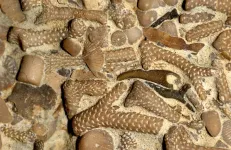
ELSE PRESS RELEASES FROM THIS DATE:
2021-01-21
In nature, many things have evolved that differ in size, color and, above all, in shape. While the color or size of an object can be easily described, the description of a shape is more complicated. In a study now published in Nature Communications, Jacqueline Nowak of the Max Planck Institute of Molecular Plant Physiology and her colleagues have outlined a new and improved way to describe shapes based on a network representation that can also be used to reassemble and compare shapes.
Jacqueline Nowak designed a novel approach that relies on a network-based shape representation, named visibility graph, along with a tool for analyzing shapes, ...
2021-01-21
The study explains the benefits of both the wing shape and the flexibility of their wings.
The Lund researchers studied the wingbeats of freely flying butterflies during take-off in a wind tunnel. During the upward stroke, the wings cup, creating an air-filled pocket between them. When the wings then collide, the air is forced out, resulting in a backward jet that propels the butterflies forward. The downward wingbeat has another function: the butterflies stay in the air and do not fall to the ground.
The wings colliding was described by researchers almost 50 years ago, but it is only in this study that the theory has been tested on real butterflies in free ...
2021-01-21
Three-dimensional (3D) direct laser writing (DLW) based on two-photon polymerisation (TPP) is an advanced technology for fabricating precise 3D hydrogel micro- and nanostructures for applications in biomedical engineering. Particularly, the use of visible lasers for the 3D DLW of hydrogels is advantageous because it enables high fabrication resolution and promotes wound healing. Polyethylene glycol diacrylate (PEGda) has been widely used in TPP fabrication owing to its high biocompatibility. However, the high laser power required in the 3D DLW of PEGda microstructures using a visible laser in a high-water-content environment limits its applications to only those below the biological laser power safety level.
In a new paper ...
2021-01-21
Rather like David versus Goliath, it appears that Saturn's tilt may in fact be caused by its moons. This is the conclusion of recent work carried out by scientists from the CNRS, Sorbonne University and the University of Pisa, which shows that the current tilt of Saturn's rotation axis is caused by the migration of its satellites, and especially by that of its largest moon, Titan.
Recent observations have shown that Titan and the other moons are gradually moving away from Saturn much faster than astronomers had previously estimated. By incorporating this increased migration rate into their calculations, the researchers concluded that ...
2021-01-21
To process information in our brains, nerve cells produce brief electrical impulses, called action potentials, triggered from one highly specialized region. Research from the Netherlands Institute for Neuroscience, together with researchers from Heidelberg University and the University of Göttingen in Germany, now show that the electrical trigger sites surprisingly change with experience; they are either becoming smaller with increasing number of experiences and, vice versa, they grow larger when less input arrives in the brain. The results were published in Nature Communications.
Exploring the environment
Rodents learn about their environment by moving their highly sensitive whiskers, with which they touch ...
2021-01-21
Researchers from the Sonia and Marco Nadler Institute of Archaeology at Tel Aviv University unraveled the function of flint tools known as 'chopping tools', found at the prehistoric site of Revadim, east of Ashdod. Applying advanced research methods, they examined use-wear traces on 53 chopping tools, as well as organic residues found on some of the tools. They also made and used replicas of the tools, with methods of experimental archaeology. The researchers concluded that tools of this type, found at numerous sites in Africa, Europe and Asia, were used by prehistoric humans at Revadim to neatly break open bones of medium-size animals such as fallow deer, gazelles and ...
2021-01-21
UV-radiation can affect hormone levels of postmenopausal women negatively and this may contribute to several health issues.
The concentration of oestrogens in the blood affects a woman's health in many ways. For example, oestrogens contribute to a strong bone structure and help wounds heal more quickly:
"When a woman reaches menopause, we see the levels of oestrogens decline and an increase of other hormones, called gonadotropins", says Kai Triebner at the University of Bergen.
For several years, he has studied the hormonal balance of women in relation to menopause: What effects changing hormone levels ...
2021-01-21
With Japan's society rapidly aging, there has been a sharp increase in patients who experience motor dysfunctions. Rehabilitation is key to overcoming such ailments.
A researcher from Tohoku University has developed a new virtual reality (VR) based method that can benefit rehabilitation and sports training by increasing bodily awareness and?improving motor control.
His research was published in the Journal Scientific Report.
Not only can we see and touch our body, but we can sense it too. Our body is constantly firing off information to our brains that tell us where our limbs are in real-time. This process makes us aware of our body and gives us ownership over it. Meanwhile, our ability to control ...
2021-01-21
Water splitting research for solar hydrogen production has focused on physical processes inside the semiconductor, such as light absorption, charge separation, and chemical processes on the surface that are highly complex and rely on the development of new materials. However, processes inside the solution had yet to be thoroughly explored.
One recent approach to improve photocatalytic hydrogen production was proposed by loading phosphonate groups on the surface of the visible-light-responsive photocatalyst lanthanum and rhodium-doped strontium titanate (La,Rh:STO) with a silane coupling agent. The phosphonate functional group functions as a mediator of proton supply (i.e., promotes the supply of reactants) and improves hydrogen production activity.
There have been ...
2021-01-21
Just a few millimetres thick, articular cartilage plays a crucial role in our musculoskeletal system, since it is responsible for smooth (in the truest sense of the word) movement. However, the downside of its particular structure is that even minor injuries do not regenerate. Timely treatment of cartilage damage is therefore essential. Biomaterials are often used to support the cells, their distribution and protection. In most cases, this treatment significantly improves the patient's clinical symptoms but fails to fully restore the cartilage to its original state. The working group led by Sylvia Nürnberger (MedUni Vienna's Department of Orthopedics and Trauma Surgery) ...
LAST 30 PRESS RELEASES:
[Press-News.org] Climate-related species extinction possibly mitigated by newly discovered effect
According to a new study, future climate-related species extinction could be less severe than predictions based only on the current trend of global warming.

